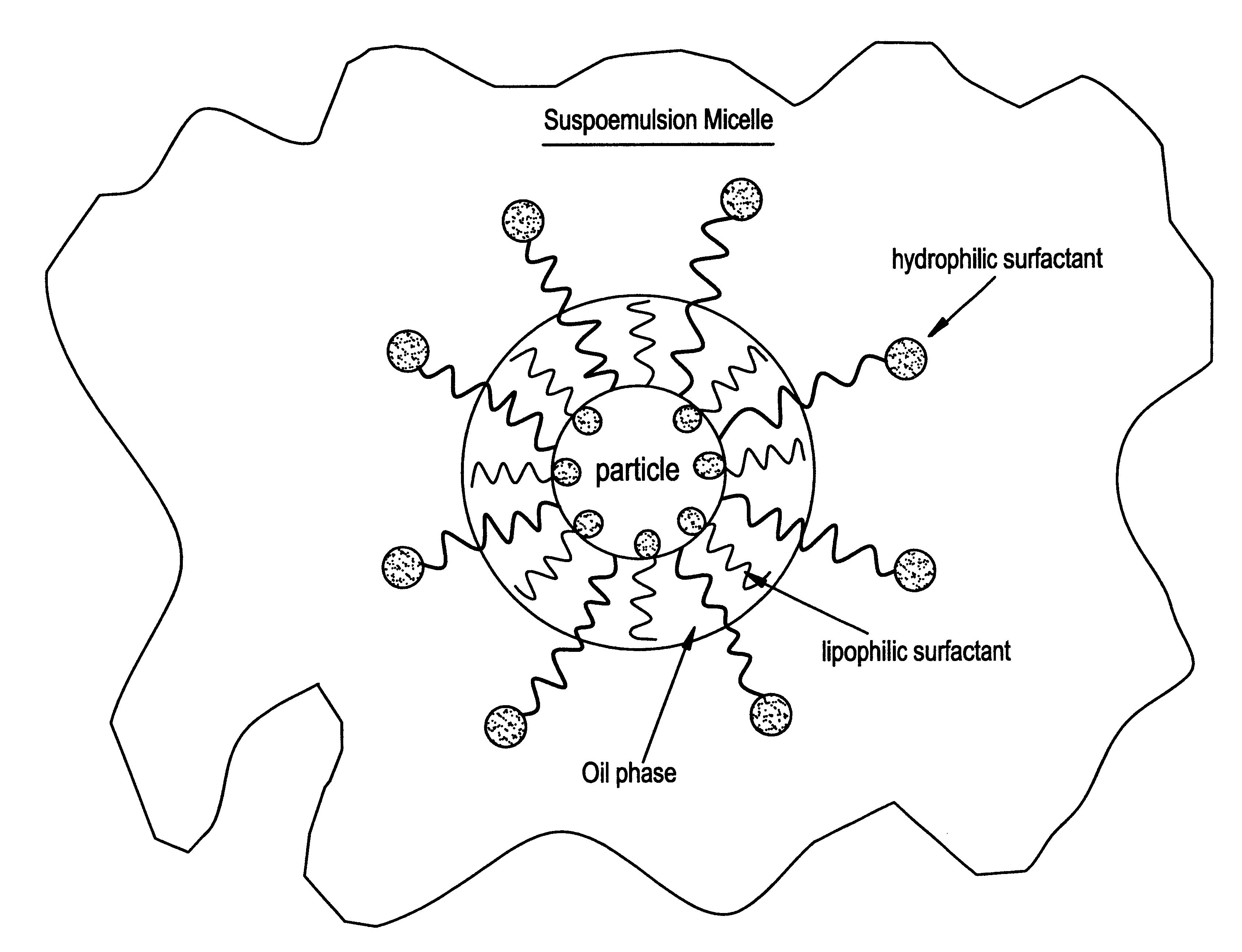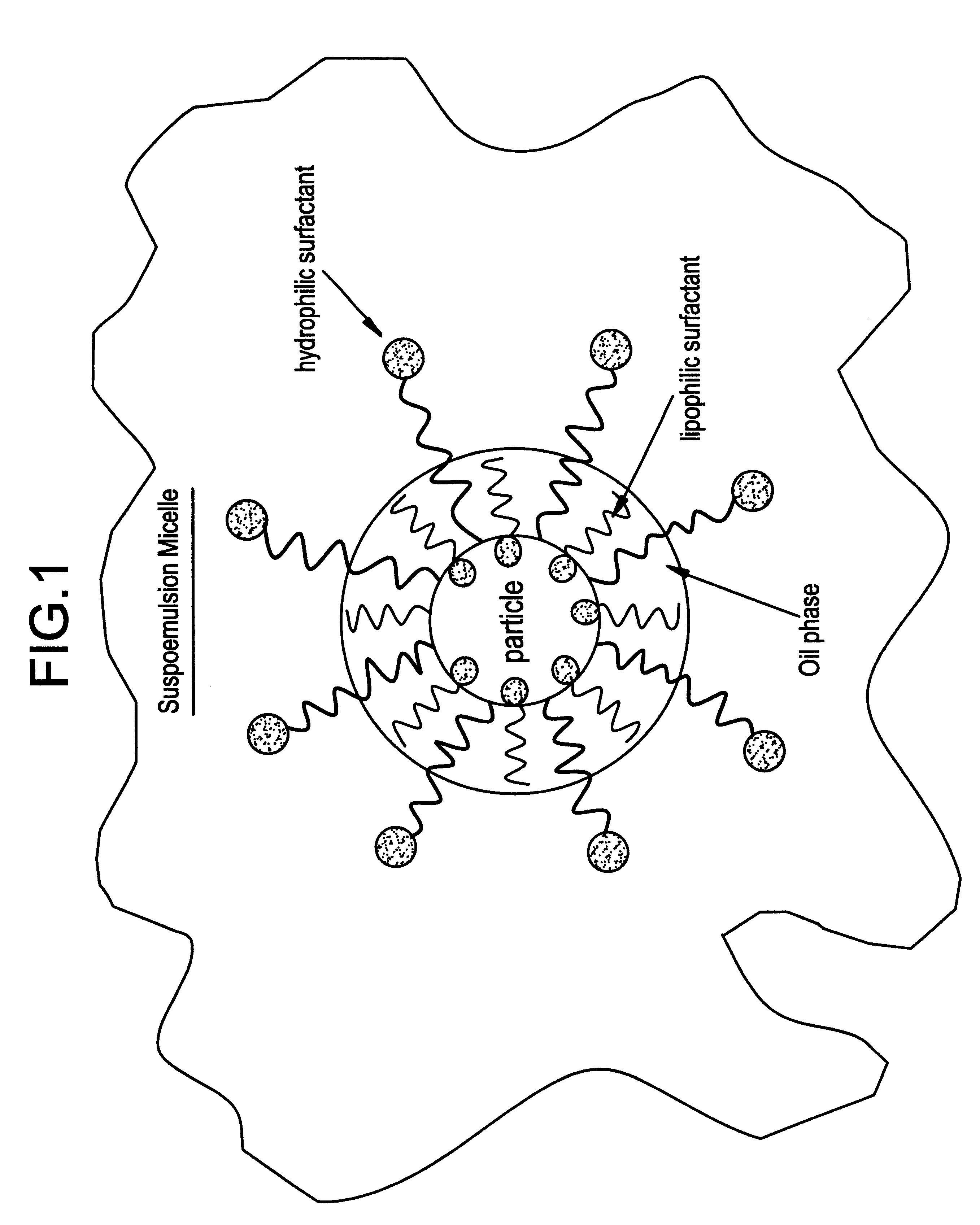Suspoemulsion system for delivery of actives
a technology of suspoemulsion and actives, applied in the direction of ampholytes/electroneutral surface active compounds, detergent compounding agents, carpet/fur/leather cleansers, etc., can solve the problem of loss of enzyme stability
- Summary
- Abstract
- Description
- Claims
- Application Information
AI Technical Summary
Benefits of technology
Problems solved by technology
Method used
Image
Examples
example i
In the above example, the first two co-thickeners are combined with the mineral oil to form an oil phase, with slow heating to about 50.degree. C. / 122.degree. F. until fully blended. This first oil phase is allowed to cool to ambient temperature. Next, the first three surfactants are dissolved in a quantity of water, with slow heating to about 50.degree. C. / 122.degree. F. until fully blended, and this mixture is also allowed to cool. Using a variable high speed mixing apparatus, for example, Dispermat (VMA-Getzmann GmbH) (other potentially useful mixers include Microfluidizer (Arthur D. Little) and apparatuses from Hobart; ball mixers, rollers and other devices may also be suitable), the abrasive is slowly mixed into the water / surfactants mixture at about 4,000 rpm. Thereafter, the last co-thickener / adhering agent is added, slowly. The oil phase mixture is then introduced, at much higher shear, about 8,000 rpm, and processed well. Finally, the last surfactant and the chelating agent...
example ii
The above ingredients are combined in the variable high speed mixer, in much the same order and protocol as in Example I.
In the following example, a laundry additive product with residual antimicrobial efficacy is depicted (See also, Zhou, U.S. Pat. No. 6,017,561, and Zhou et al., U.S. patent application Ser. No. 09 / 116,190, filed Jul. 15, 1998, both of common assignment, and incorporated herein by reference thereto). This type of product is especially desirable because it delivers a long-lasting, antimicrobial active to a targeted surface, in this case, to fabrics washed, or to the internal surface of the washing machine or other apparatus.
example iii
In this formulation, the surfactants are blended with a quantity of water, heated slowly to 50.degree. C. / 122.degree. F., with stirring. The anionic polymer is then added slowly, with stirring. The quaternary ammonium compound is then blended into the oil phase comprising the polymer modified mineral oil. The variable high speed mixer is then used to blend the thickener / adhering agent within the aqueous phase (water / surfactants) at approximately 4,000-6,000 rpm for a time period not exceeding about 5 minutes. The oil phase is then gradually added at very high shear, about 8,000 rpm, and mixed for about 3-5 minutes further until completely blended.
In the next example, a so-called polyquat is suspended within the suspoemulsion system. The lipid or oil phase is now represented by a silicone fluid.
PUM
 Login to View More
Login to View More Abstract
Description
Claims
Application Information
 Login to View More
Login to View More - R&D
- Intellectual Property
- Life Sciences
- Materials
- Tech Scout
- Unparalleled Data Quality
- Higher Quality Content
- 60% Fewer Hallucinations
Browse by: Latest US Patents, China's latest patents, Technical Efficacy Thesaurus, Application Domain, Technology Topic, Popular Technical Reports.
© 2025 PatSnap. All rights reserved.Legal|Privacy policy|Modern Slavery Act Transparency Statement|Sitemap|About US| Contact US: help@patsnap.com


